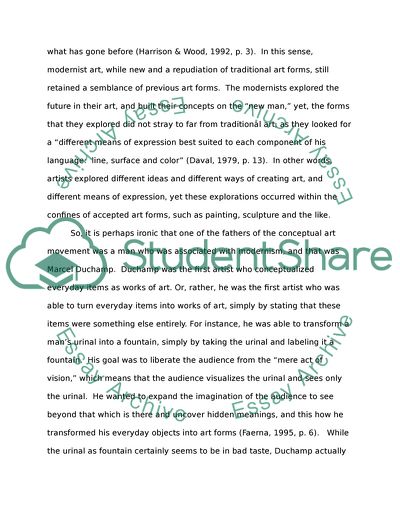Cite this document
(“Conceptual Art as a Response to Modernism Thesis”, n.d.)
Retrieved from https://studentshare.org/visual-arts-film-studies/1581698-conceptual-art-as-a-response-to-modernism
Retrieved from https://studentshare.org/visual-arts-film-studies/1581698-conceptual-art-as-a-response-to-modernism
(Conceptual Art As a Response to Modernism Thesis)
https://studentshare.org/visual-arts-film-studies/1581698-conceptual-art-as-a-response-to-modernism.
https://studentshare.org/visual-arts-film-studies/1581698-conceptual-art-as-a-response-to-modernism.
“Conceptual Art As a Response to Modernism Thesis”, n.d. https://studentshare.org/visual-arts-film-studies/1581698-conceptual-art-as-a-response-to-modernism.


